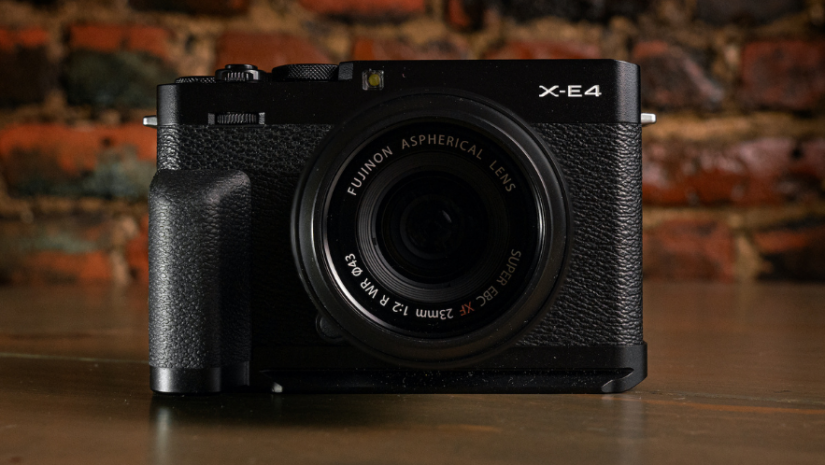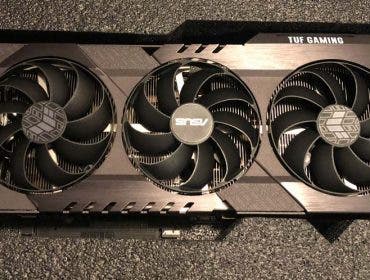As a working photographer and camera reviewer, I am usually the first person my friends and family get in touch with when it’s time to buy a camera. It usually goes a little something like “I want to get into photography. What camera should I buy?” What non-photographers don’t realize is how vague that question really is. There is no best camera for every kind of photography. Cameras are tools and different jobs may require different tools. Sometimes you need a sledgehammer, sometimes you need a scalpel. The camera I got to test this week is definitely most like the latter.
When I finally got my hands on the new Fujifilm XE4, the main question I wanted to answer with this test was “What kind of tool is this and who is it for?” As I already own a camera that’s technically superior on paper, I was curious as to how the Fujifilm made up for its “shortcomings.” Even though the XE4 didn’t have 50 megapixels or a full-frame sensor, it became the only camera I reached for when I wanted to just go take photos for fun.

Fujifilm XE4 Design
Right off the bat, I absolutely loved the look of the Fujifilm XE4. With its retro rangefinder-esque design, sharp edges, and rock-solid metal construction, I immediately felt like I was holding a classic. And, from the shutter speed dial on the top to the nicely dampened aperture ring on the lens, everything about this camera screams analog. It was instantly apparent how ergonomics and style were just as important to Fujifilm as image quality. In terms of in-hand feel, the XE4 was already leaps and bounds ahead of my significantly more expensive camera.
In this test, I used Fujifilm’s X-mount 23mm f/2 lens. This gave the camera roughly the same overall form factor as an X100 series camera, but with the added ability to change lenses. With the XE4’s 1.5x crop factor APSC sensor, this lens had a full-frame equivalent of roughly 35mm and felt perfectly suited to this application.

As great as the camera looks in stock form, it felt a little small in my hands. Fortunately, the unit I tested came with the optional hand grip and hot shoe thumb rest. These add-ons gave me a much better grip on the camera without adding too much bulk. I found the thumb brace to be particularly helpful when utilizing the camera’s front-mounted adjustment wheel. This wheel with click function is set up to let you make incremental changes in shutter speed and navigate the XE4’s menu options. It can also be customized for any function you want.

An Innovative Side-Mounted Electronic Viewfinder
Another feature I really loved about this camera is the side-mounted electronic viewfinder. While it certainly adds to the classic rangefinder aesthetic, the best part about it is the ergonomic design. When putting the camera to my eye, it felt so much more natural than using a center-mounted viewfinder. I will really miss this when I go back to shooting on my personal camera.
On the back of the camera, there’s a high-resolution articulating touchscreen that can even flip 180 degrees for taking selfies or making vlogs. Reviewing images in the XE4 is awesome and will feel familiar to any smartphone user. Just swipe left and right with your fingertip to scroll through your images and pinch to zoom in on the details.
It’s important to note that touching the screen on this camera will trigger the shutter in both photo and video mode. I was constantly taking photos and recording videos by accident. I’m sure you can disable this function somehow, though.



Fujifilm XE4 Key Features
One of the most important metrics when buying a digital camera is ISO performance. On the XE4, the ISO goes all the way up to 51,200, but I found anything over 12,000 to be a little too noisy. While it’s not an ISO beast like, say, an A7SIII, it’s still sensitive enough for most situations.
In mechanical shutter mode, the camera achieves 8 frames per second, and to me that feels sufficient for most applications of this camera. If you really need more speed, and can accept a little extra crop factor, the camera is capable of up to 30 images per second in electric shutter mode.
The XE4 has a few trick image modes including panorama, double exposure, and HDR. Whereas I think panoramas and double exposures are easier created in Photoshop, shooting in the HDR mode is your easiest option for capturing the most dynamic range. It allows you to capture the maximum information possible in difficult lighting situations; you can tune it to your liking later.

The Fujifilm XE4 for Video
I don’t think this will be the primary camera for serious video shooters, but it is still extremely capable and perfect as a second body for someone already in the Fujifilm ecosystem. The XE4 shoots 4K up to 29.97 and 1080 up to 240fps, all at 200mbps. Whether you’re upgrading from another Fujifilm body or just using it as a second camera, the XE4 uses the same NPW126 battery found in many of their other cameras. It also shoots with timecode, so multi-cam shooting is a breeze. Fujifilm has also included their proprietary F-Log flat color profile, enabling you to sync up with other Fujifilm cameras. In the final piece of the video production checklist, Fujifilm has also included a USB to headphone adaptor so you can monitor audio when recording.

After over 10 years in the photography world, the RAW workflow has started to slow me down when I’m out shooting for fun. By the time I get home, download the images to my computer, and color-correct them to my heart’s content, I’m already losing interest, and the images are often relegated forever to the depths of a hard drive. With Fujifilm’s built-in film simulation modes, though, I was able to shoot images that I liked in-camera. Then, using the free Fujifilm Cam Remote app, I could transfer my new ready-to-share images directly to my phone. On top of the workflow speed, I felt like it made me focus on getting everything right when shooting, instead of leaning on RAW as a crutch.
This brings me back to the target audience for this camera. It’s not the camera I would bring to work; it’s what I would bring everywhere else. It feels like the missing link between my old film cameras and my new digital ones. Such detail has been paid to the look and feel of the camera that it makes taking every image that much more enjoyable. So, if you’re on a bit of a budget, and the camera’s look and feel is just as important as the images it produces, the Fujifilm XE4 might be the camera you’ve been looking for.
Feature image by Cooper Naitove






